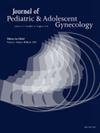31. Effective Management of Multi-Resistant Neonatal Breast Abscess Through Early and Precise Care.
IF 1.8
4区 医学
Q3 OBSTETRICS & GYNECOLOGY
引用次数: 0
Abstract
Background
Neonatal breast abscess is a rare but significant condition, typically occurring in full-term infants due to the spread of skin flora, often Staphylococcus aureus, to the breast parenchyma. This condition, if not treated promptly, can result in serious complications such as breast hypoplasia or scarring. Recognizing early signs and appropriate management are crucial for a favorable outcome.
Case
We present the case of a 1-month-old female infant, full-term at 39+5 weeks gestation, with no prior medical history or hospitalizations, and up-to-date on her immunizations. She developed a right-sided breast abscess, presenting with a firm, warm, erythematous swelling with induration and tenderness. The patient had no fever but was tachycardic. Laboratory results showed a white blood cell count of 19.55 × 10³/µl and C-reactive protein of 25 mg/L. Breast ultrasound revealed a poorly defined hypoechoic lesion measuring 30 × 22 mm with a central, irregular liquid collection of 13 × 10 mm. Despite intravenous Cloxacillin, the patient showed no improvement by the third day. Surgical drainage was performed with the support of interventional radiology, extracting 2 cc of pus under ultrasound guidance. Cultures revealed multi-resistant Staphylococcus aureus. Vancomycin treatment was initiated, with dose adjustments made after the fifth dose. The infant was treated successfully, followed by a 10-day course of oral Cotrimoxazole. Full recovery was observed, with no further complications. Ethics Approval: This case was reviewed and approved by the Ethics Committee of Hospital Dr. Luis Calvo Mackenna, in accordance with institutional guidelines.
Comments
This case emphasizes the importance of early diagnosis, timely surgical intervention, and the selection of appropriate antibiotic therapy, particularly in cases involving multi-resistant pathogens. Prompt treatment is critical to prevent complications such as damage to developing breast tissue. The adjustment of antibiotic dosing in young infants, as demonstrated with Vancomycin in this case, is crucial due to their unique pharmacokinetics, ensuring therapeutic effectiveness while minimizing toxicity. Additionally, the role of interventional radiology in enhancing precision during abscess drainage in neonatal patients is highlighted, contributing to successful outcomes and minimizing potential complications. Financial Disclosure: The authors have no financial relationships relevant to this case to disclose.
31. 早期精准护理对多重耐药新生儿乳腺脓肿的有效治疗。
背景:新生儿乳房脓肿是一种罕见但重要的疾病,通常发生在足月婴儿,由于皮肤菌群扩散,通常是金黄色葡萄球菌,到乳房实质。这种情况,如果不及时治疗,可能会导致严重的并发症,如乳房发育不全或疤痕。认识到早期症状和适当的管理是取得良好结果的关键。病例:我们报告一例1个月大的女婴,妊娠39+5周足月,无既往病史或住院治疗,最新免疫接种情况。她出现右侧乳房脓肿,表现为坚硬、温暖、红斑性肿胀,并有硬化和压痛。病人没有发烧,但心动过速。实验室结果显示白细胞计数19.55 × 10³/µl, c反应蛋白25 mg/ l。乳腺超声显示一界限不清的低回声病变,尺寸为30 × 22 mm,中央不规则积液13 × 10 mm。尽管静脉注射氯西林,但患者到第三天仍无好转。手术引流在介入放射辅助下,超声引导下抽取脓液2cc。培养显示多重耐药金黄色葡萄球菌。开始万古霉素治疗,第五次剂量后调整剂量。婴儿治疗成功,随后口服复方新诺明10天疗程。观察到完全恢复,没有进一步的并发症。伦理批准:本病例由Luis Calvo Mackenna医生的医院伦理委员会根据机构指南进行审查和批准。该病例强调了早期诊断、及时手术干预和选择适当抗生素治疗的重要性,特别是在涉及多重耐药病原体的病例中。及时治疗对于预防并发症至关重要,例如对发育中的乳腺组织的损害。幼儿抗生素剂量的调整至关重要,因为万古霉素具有独特的药代动力学,可以确保治疗效果,同时将毒性降到最低。此外,本文强调了介入放射学在新生儿患者脓肿引流过程中提高准确性的作用,有助于获得成功的结果并最大限度地减少潜在的并发症。财务披露:作者没有与本案例相关的财务关系需要披露。
本文章由计算机程序翻译,如有差异,请以英文原文为准。
求助全文
约1分钟内获得全文
求助全文
来源期刊
CiteScore
3.90
自引率
11.10%
发文量
251
审稿时长
57 days
期刊介绍:
Journal of Pediatric and Adolescent Gynecology includes all aspects of clinical and basic science research in pediatric and adolescent gynecology. The Journal draws on expertise from a variety of disciplines including pediatrics, obstetrics and gynecology, reproduction and gynecology, reproductive and pediatric endocrinology, genetics, and molecular biology.
The Journal of Pediatric and Adolescent Gynecology features original studies, review articles, book and literature reviews, letters to the editor, and communications in brief. It is an essential resource for the libraries of OB/GYN specialists, as well as pediatricians and primary care physicians.

 求助内容:
求助内容: 应助结果提醒方式:
应助结果提醒方式:


